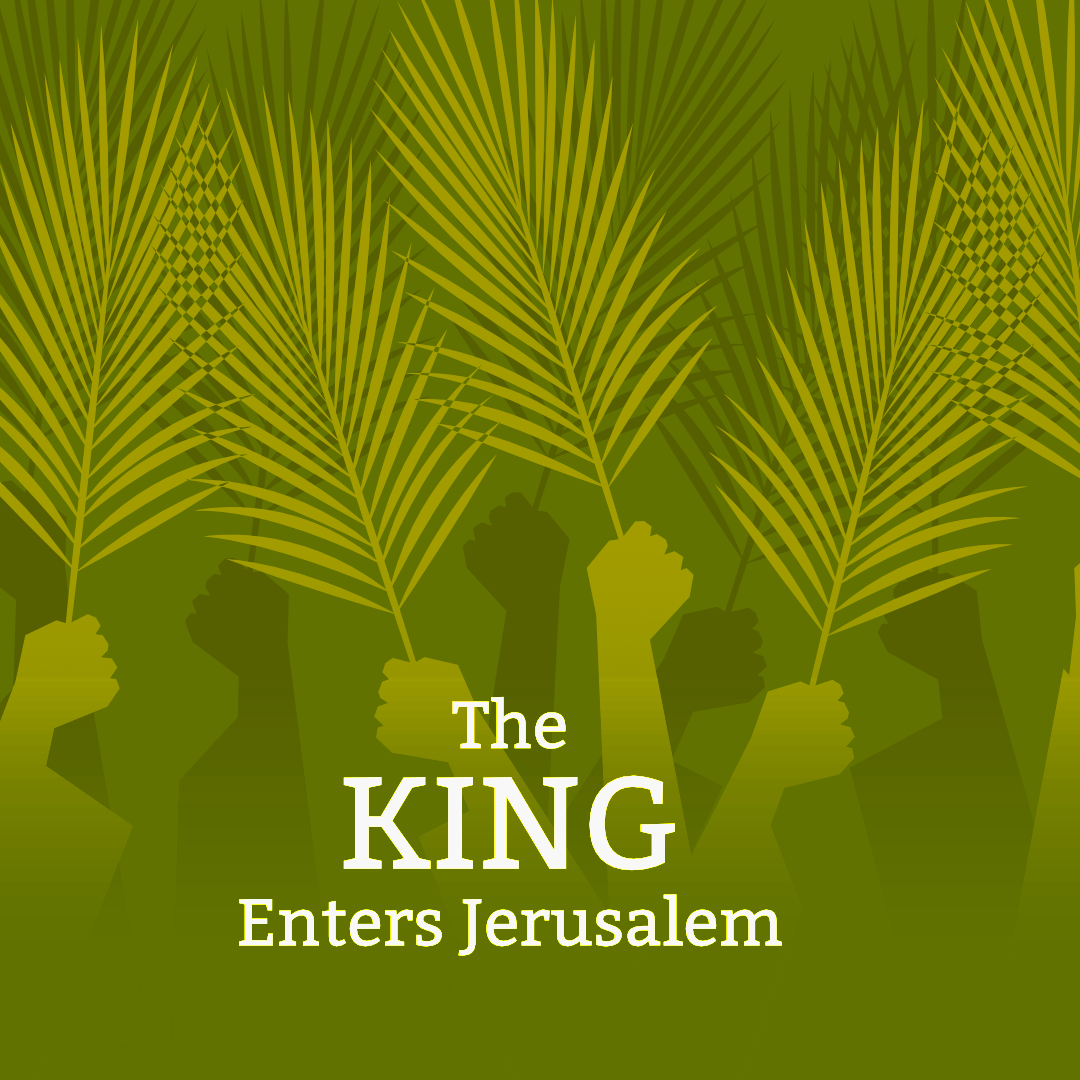Journey to the Cross: An Easter Study From Mark’s Gospelنموونە


The King Enters Jerusalem (Mark 11:1-26)
"When they brought the colt to Jesus and threw their cloaks over it, he sat on it." Mark 11:7 (NIV)
Context
The video (below) surveys the historical events that had shaped the messianic expectations of Jews in the 1st century. These expectations help us identify why the crowds were so excited when Jesus entered Jerusalem in the way that he did.
Additionally, some biblical context from 1 Kings and Zechariah will help interpret the significance of the triumphal entry:
- In 1 Kings 1:32-48, David commands for a procession that will result in Solomon being anointed as the next king over Israel. Solomon was to ride into Gihon and Jerusalem on David’s personal mule, the type of mount used by a king when he was peacefully entering the city of his throne.
- In Zechariah 9:9-12, the prophet predicts a day when Jerusalem’s rightful king will come in humility and peace and, like Solomon, riding on a donkey.
Observation
While you read Mark 11:1-26, note the geographical locations referenced. You might want to highlight them directly in the text:
- Jesus and the disciples are at Bethpage and Bethany at the Mount of Olives (Mark 11:1)
- Two disciples are sent ahead to an unnamed village (Mark 11:2)
- Jesus enters Jerusalem, riding on a donkey’s colt (Mark 11:11)
- When he enters the city, he immediately goes to the temple courts (Mark 11:11)
- Then, Jesus returns to Bethany for the night (Mark 11:11)
- Leaving Bethany, Jesus sees a fig tree with no fruit (Mark 11:12)
- In Jerusalem, Jesus returns to the temple courts and drives out those buying and selling (Mark 11:15)
- Then, Jesus again leaves the city for the night (Mark 11:19)
Also, notice the “back-and-forth” between stories set in the temple and references to a fig tree:
- As soon as Jesus enters Jerusalem on a colt, he goes to the temple (Mark 11:11)
- The next day, Jesus sees a fig tree without any fruit, for it was not the season for figs (Mark 11:12-14)
- When Jesus arrives at the temple, he clears it of buyers and sellers (Mark 11:15-19)
- Peter points out that the cursed fig tree has withered (Mark 11:20-21).
Interpretation
When Jesus entered Jerusalem riding on a donkey's colt, his disciples and the crowds were ecstatic. From 1 Kings and Zechariah, they knew what this meant. The promised messianic king was here! The rightful heir would finally ascend to David’s throne!
- Based on the information you gathered from today’s video, what do you think the crowds expected to happen next? What did they expect Jesus to do?
No doubt, Jesus' actions on the very next day (clearing the temple) surprised them greatly. They indicated to his audience that after the arrival of the long-awaited king, he intended to settle the kingdom's internal affairs first, including the corruption of the temple system.
The “back-and-forth” between stories set in the temple and references to a fig tree indicates that Mark wants readers to view the fruitless fig tree as a symbol for the temple, which was not bearing the fruit that God desired (see Jeremiah 8:8-13). Buying and selling (probably unjustly) had become the focus, rather than prayer and mediating God’s blessing for all nations (see Isaiah 56:7). Jesus’ curse of the fig tree is a prophetic picture of God’s judgment on the Jerusalem temple. Like the Old Testament prophets, Jesus pronounces that God had abandoned his temple and it would fall (see Jeremiah 7:8-15). Jesus’ prophecy was fulfilled in AD70 when Rome destroyed this temple.
Application
King Jesus did not enter Jerusalem on a donkey’s colt with a plan to overthrow political systems and start a violent revolution. Rather, he went to die for the sake of the world’s sins and to create a “new temple” that would welcome all nations.
As you prepare for Easter, consider what you most desire King Jesus to come and do:
- Do you, like the crowds, want him to come and violently overthrow those who oppress or oppose you?
- Or, do you see the areas in your life that, like the temple, need his cleansing to make you a welcoming space for others?
دەربارەی ئەم پلانە

This plan will guide you through an inductive study of Jesus’ journey to the cross, beginning with the triumphal entry into Jerusalem. Grab a notebook to jot down your thoughts as you are led through a process of (1) observing the events of Passion Week, (2) interpreting the original message to the church in Rome, and (3) applying the Easter story’s timeless truths to your life today.
More
پلانە پەیوەستەکان

More Than Money

Why Trust the Bible?

Wisdom in the Word

Renew: To Transform, Be Transformed by God’s Mercy

Encounter: People Jesus Met, Then and Now

We Are Family

Can I Trust the Bible?

Enfolded: A Reflection on God’s Psalm 91 Promises

Family by Choice: God’s Heart for Family Beyond Biology
